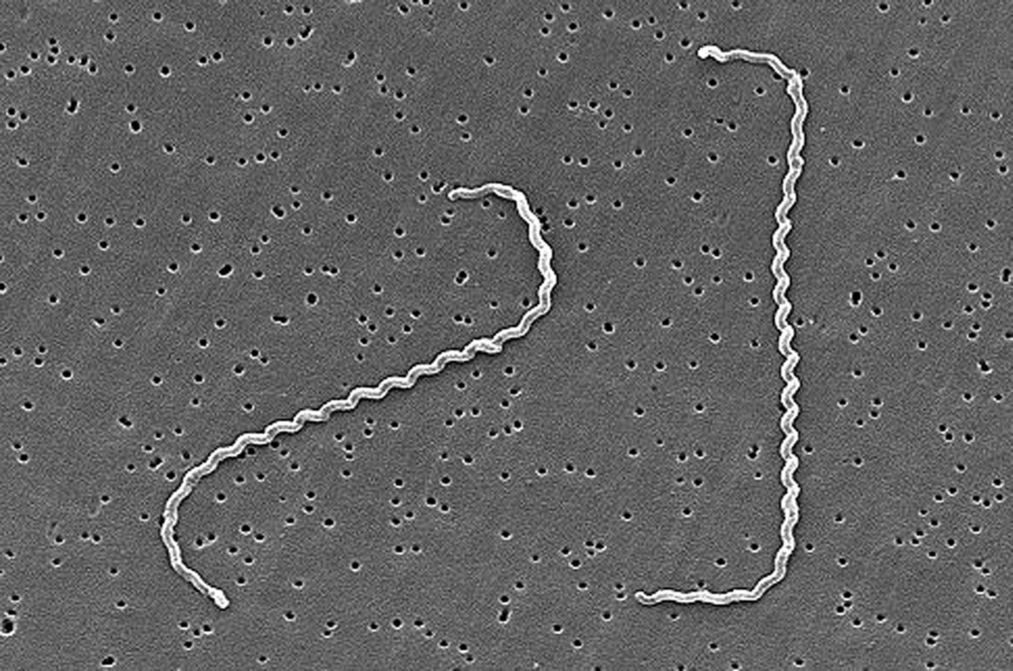Reproductive System
Leptospirosis
Clinical importance
Leptospirosis is a bacterial disease causing reproductive issues in breeding herds worldwide. The bacteria targets both the kidneys and the reproductive tract, and is excreted via urine and genital fluids. Compared to parvovirus or Erysipelothrix rhusiopathiae, it does not survive for long in the environment as it requires warm and humid conditions to survive. It is a zoonotic disease that affects all mammals. Symptoms in humans range from flu syndrome (fever and muscle pains) to liver and renal failure, and ultimately death. In swine, symptoms are mainly confined to reproductive issues.
Etiology/Cause
There are many species of bacteria in the genus Leptospira. In the swine, the most pathogenic ones belong to the species Leptospira interrogans (Servorars Pomona, Bratislava and Kennewicki) and Leptospira borgpetersenii. They are small, slow growing, and gram-negative. The bacteria can move autonomously thanks to two flagella at opposite ends. The result looks like a corkscrew motion. The disease can be transmitted through exposure to a contaminated environment, particularly water, contact with a carrier pig, or with an infected vector, such as rats and mice.
Similarly to parvovirus infections and erysipelas, the causative agent of leptospirosis is very resistant in the environment. True or False?
- True
- False
Associated symptoms
Acute leptospirosis usually goes unnoticed on the farm because associated clinical signs are mild and non-specific: light fever, ataxia, and depressed behavior are most common. Chronic leptospirosis, however, exhibits much more noticeable signs such as abortions, stillbirths, small litter size, and weak piglets.
Associated lesions
Macroscopic lesions
Acute leptospirosis leaves no macroscopic changes. In chronic leptospirosis, lesions are limited to the kidneys where multifocal, small areas of discoloration appearing as grey can be noted.
Microscopic lesions
The main change caused by all types of Leptospira infection is damage to the endothelial cells of small blood vessels. In chronic leptospirosis, interstitial nephritis with infiltration of leukocytes is common.
Clinical signs associated with leptospirosis are mainly seen in which population of pigs?
- Boars
- Growing pigs
- Sows
Diagnosis
Clinical signs are not specific enough to make a definitive diagnosis, laboratory testing is necessary. Serological tests are sensitive and widely used over the world. However, within the USA where the majority of the sows are vaccinated against leptospirosis, their interpretation is difficult. Therefore, diagnostic tests focus on detecting the pathogen within tissues. PCR testing and the less sensitive Immunohistochemistry (IHC) can be used on kidneys or fetal tissues.
Differential diagnosis
Leptospirosis manifests itself primarily through late-term abortion, therefore the main differential to explore is Porcine Reproductive and Respiratory Syndrome (PRRS). Brucellosis, and an infection by swine parvoviruses can also be considered.
Treatment, Prevention and Control
There are three components to control of leptospirosis: antibiotic therapy, vaccination, and management. Tetracyclines and aminoglycosides are most commonly used to treat infected herds. In the USA, breeding herds are regularly immunized with a combo vaccine combining Parvovirus, Erysipelothrix and Leptospira (PLE vaccine). The number of Leptospira infections is greatly reduced by vaccination, making leptospirosis a rare disease in the country. However, biosecurity measures including rodent control should be strict. If an outbreak occurs, antimicrobial treatment followed by regular herd vaccination is the preferred course of action.
In a traditionally vaccinated sow herd, which diagnostic test will be most useful to diagnosis leptospirosis?
- ELISA on serum
- Non. Clinical signs are sufficient.
- PCR on fetal tissues


